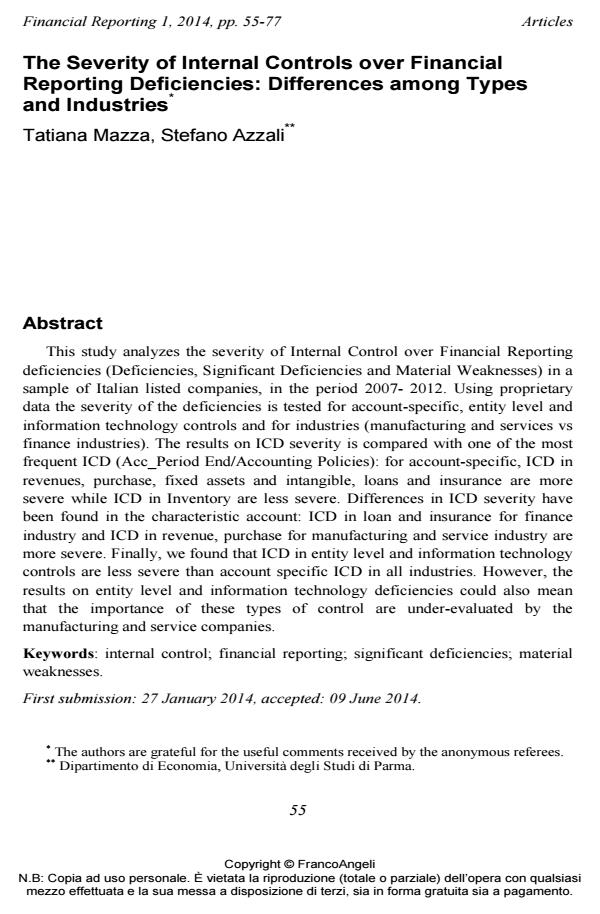The Severity of Internal Controls over Financial Reporting Deficiencies: Differences among Types and Industries
Titolo Rivista FINANCIAL REPORTING
Autori/Curatori Tatiana Mazza, Stefano Azzali
Anno di pubblicazione 2014 Fascicolo 2014/1
Lingua Inglese Numero pagine 23 P. 55-77 Dimensione file 260 KB
DOI 10.3280/FR2014-001003
Il DOI è il codice a barre della proprietà intellettuale: per saperne di più
clicca qui
Qui sotto puoi vedere in anteprima la prima pagina di questo articolo.
Se questo articolo ti interessa, lo puoi acquistare (e scaricare in formato pdf) seguendo le facili indicazioni per acquistare il download credit. Acquista Download Credits per scaricare questo Articolo in formato PDF

FrancoAngeli è membro della Publishers International Linking Association, Inc (PILA)associazione indipendente e non profit per facilitare (attraverso i servizi tecnologici implementati da CrossRef.org) l’accesso degli studiosi ai contenuti digitali nelle pubblicazioni professionali e scientifiche
This study analyzes the severity of Internal Control over Financial Reporting deficiencies (Deficiencies, Significant Deficiencies and Material Weaknesses) in a sample of Italian listed companies, in the period 2007- 2012. Using proprietary data the severity of the deficiencies is tested for account-specific, entity level and information technology controls and for industries (manufacturing and services vs finance industries). The results on ICD severity is compared with one of the most frequent ICD (Acc_Period End/Accounting Policies): for account-specific, ICD in revenues, purchase, fixed assets and intangible, loans and insurance are more severe while ICD in Inventory are less severe. Differences in ICD severity have been found in the characteristic account: ICD in loan and insurance for finance industry and ICD in revenue, purchase for manufacturing and service industry are more severe. Finally, we found that ICD in entity level and information technology controls are less severe than account specific ICD in all industries. However, the results on entity level and information technology deficiencies could also mean that the importance of these types of control are under-evaluated by the manufacturing and service companies.
Parole chiave:Internal control; financial reporting; significant deficiencies; material weaknesses. First submission: 27 January 2014, accepted: 09 June 2014.
Tatiana Mazza, Stefano Azzali, The Severity of Internal Controls over Financial Reporting Deficiencies: Differences among Types and Industries in "FINANCIAL REPORTING" 1/2014, pp 55-77, DOI: 10.3280/FR2014-001003